Table of Contents
Coracobrachialis Origin and Insertion
It starts from the tip of the coracoid process, which is similar to the short head of the biceps brachii muscle. It is inserted into the medial border of the middle of the shaft of the humerus by fleshy fibers, where the nutrient foramen of the bone is normally located.
Blood Supply
The blood supply to the coracobrachialis muscle is provided by the muscular branches of the brachial artery. The anterior circumflex humeral and thoracoacromial arteries provide additional supply.
Read The Radial Artery
Nerve Supply
The musculocutaneous nerve, a branch of the brachial plexus’s lateral cord, pierces the muscle and supplies it before piercing.
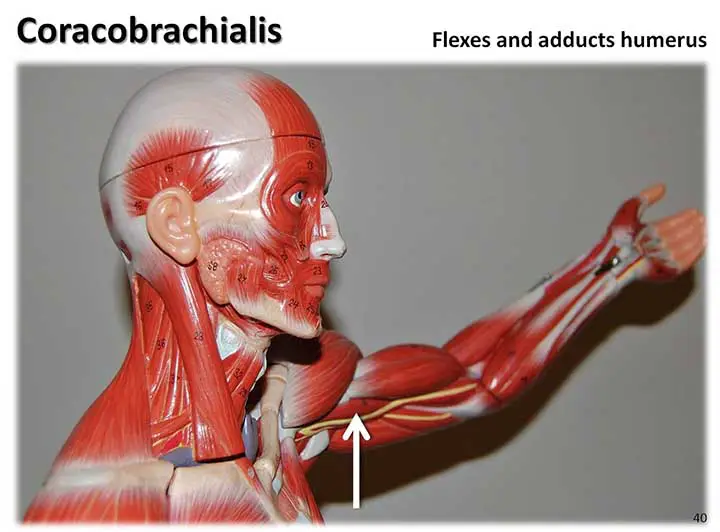
Action
It’s a flexor of the shoulder joint but not so powerful.
At the shoulder joint, the coracobrachialis muscle primarily bends the arm (flexion) and pulls the arm towards the trunk (adduction). The coracobrachialis muscle serves as a powerful antagonist to the deltoid muscle when the arm is abducted and extended.
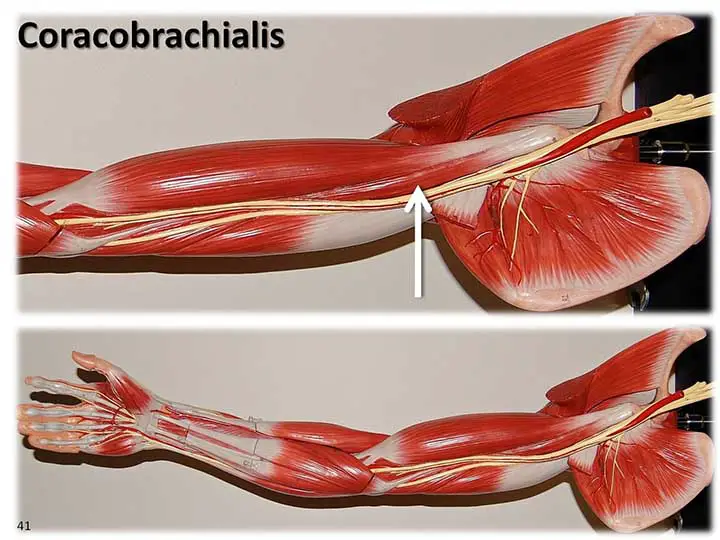
Relations
The coracobrachialis muscle is located back to the pectoralis major and anterior to the tendons of the subscapularis muscle, latissimus dorsi, teres major, and triceps medial head. The biceps brachii and brachialis muscles are located medially to the biceps brachii and brachialis muscles. The median nerve crosses the humeral insertion of the coracobrachialis anteriorly. Coracobrachialis, together with the humerus, forms the lateral border of the axilla, where it is also the simplest to palpate the muscle.
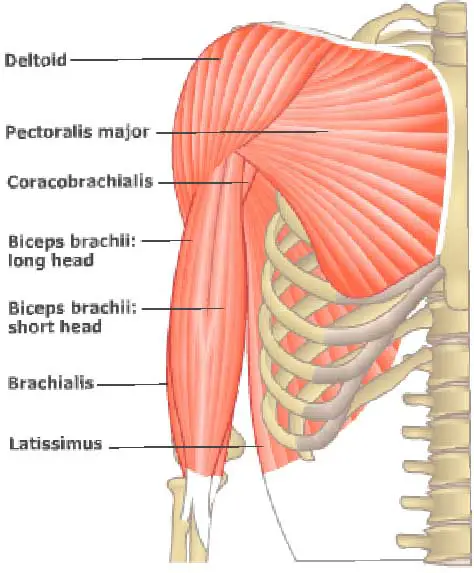
Morphological Importance
The musculocutaneous nerve is wrapped between the coracoid process and the musculocutaneous nerve. In most people, the lower head is suppressed. The ligament of Struthers is a fibrous band that runs from an occasional bony projection, the supratrochlear spur, from the anteromedial surface of the lower part of the humerus to the medial epicondyle. The median nerve or brachial artery can move beneath the ligament, causing vascular spasm or median nerve palsy.
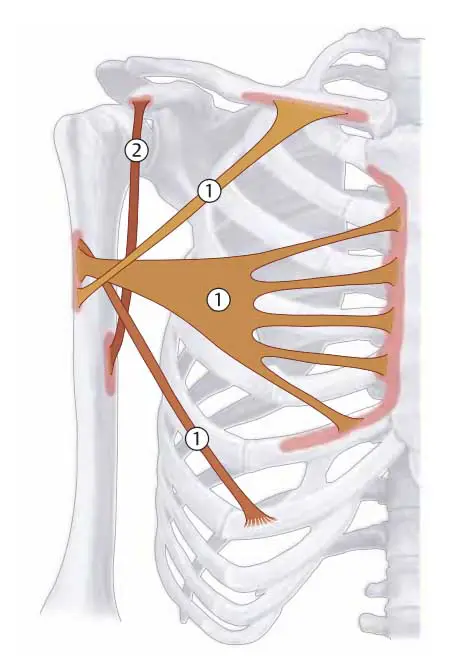
Clinical Importance
Overuse of the coracobrachialis may result in muscle hardening. Bench pressing with extremely heavy weights and bearing heavy loads with hanging arms are two common triggers. Pain in the arm and shoulder that radiates down to the back of the hand is a common symptom.
The musculocutaneous nerve, which runs through the coracobrachialis, may become stuck in more extreme cases (entrapment). As the nerve also supplies the biceps brachii and brachialis muscles, affected patients have skin sensation disturbances on the radial portion of the forearm and a decreased flexion in the elbow. A rupture of the coracobrachialis, on the other hand, is exceedingly rare and almost always occurs in serious incidents.
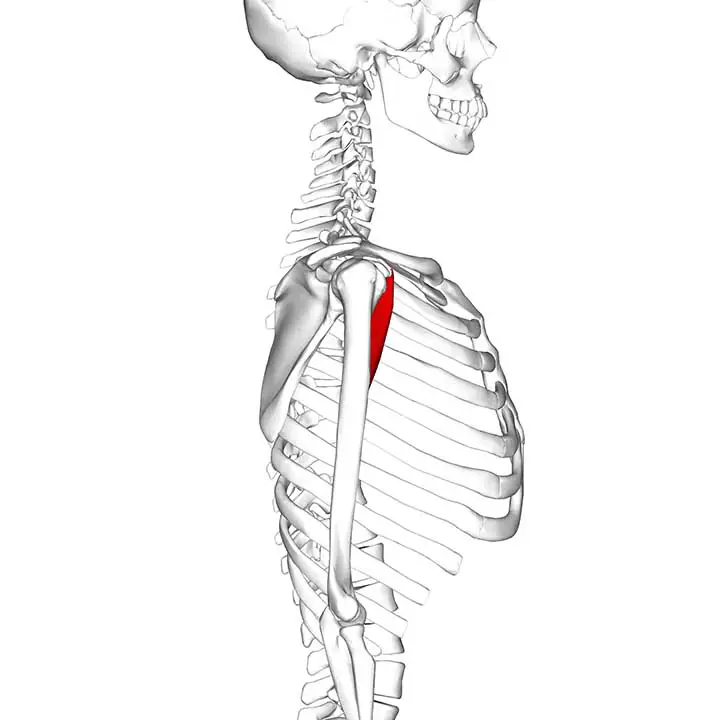
Coracobrachialis Muscle Summery
| Origin | The coracoid process’s tip with the biceps brachii’s short head |
| Insertion | The middle 5 cm of the humerus’s medial border |
| Nerve Supply | Musculocutaneous nerve (C5-C7) |
| Blood Supply | Mainly from the brachial artery |
| Action | Flexion of the arm at the shoulder joint(weak flexor) |
Last Updated on February 23, 2022 by Learn From Doctor Team





